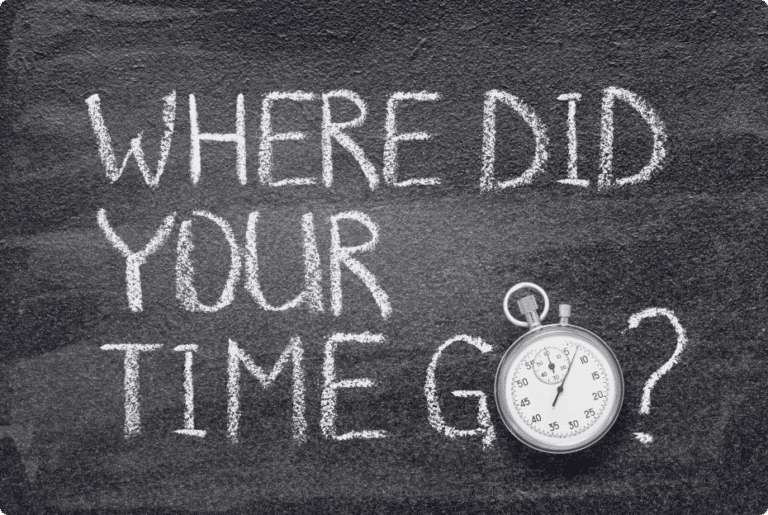By Sarah Ludwig Rausch
Pretty much everyone has heard of ADD, or as we now call it, ADHD. (That stands for attention-deficit/hyperactivity disorder). And I think it’s safe to say that most of us have a preconceived idea about it. When you think of someone with ADHD, is the image that comes to mind an out-of-control, hyperactive little boy? It always was for me.
Could I Have ADHD?
Then, about eight years ago, I stumbled on a post by one of my fellow writers in a forum. It detailed her journey to getting a diagnosis of inattentive ADHD. As I read about her symptoms and how they affected her, I was stunned. It was like I was reading about my own life.
Late for everything? Check. Always losing your phone/keys/other important items? Check. Difficulty focusing? Constantly putting off work that takes a lot of concentration? Completely disorganized despite your best efforts? Check, check, and check.
Still, I was confused. How could I, a mom in her 30s with four kids and her own business, have ADHD? Wasn’t this a condition that only kids have? Why was adult ADHD not anywhere on my radar? Plus, I was already being treated by a psychiatrist for depression and a mild case of obsessive-compulsive disorder, or OCD. How had my symptoms gone unnoticed?
ADHD Affects Adults Too
I love any excuse to research, so I immediately dove in, reading whatever I could about adult ADHD. The first thing I found was that many people aren’t diagnosed with ADHD until they’re adults. This is particularly true if you were in school in the 1980s and 1990s (or earlier) when ADHD was less recognized.
And get this: If you were diagnosed with ADHD as a child, it’s likely you’ll still have at least mild symptoms as an adult. In fact, a recent study found that only 10% of children with ADHD grow out of it completely.
Childhood Symptoms
As I thought back to my childhood, I realized many of these issues had affected me then too. This makes sense since you can’t develop adult ADHD suddenly. To be diagnosed, you must have experienced several severe symptoms before the age of 12.
I’ve had symptoms for as long as I can remember, though they have changed over the years. I remember sitting on my hands in an effort not to blurt things out while the teacher talked. Often, I felt like I would burst if I didn’t talk to my nearest classroom neighbor. Needless to say, I was scolded a lot. I was constantly distracted from my homework and my chores, and I was — and still am, truth be told — extremely fidgety.
Females Are Diagnosed Less Often
Another fascinating tidbit I discovered through my internet travels was the probable reason I was never diagnosed. It’s because females, especially school-age girls, are less likely to be diagnosed with ADHD. Why? Because most females have the inattentive type, which is more mental than physical, making it easier to overlook.
There are three types of ADHD: Inattentive, hyperactive-impulsive, and a combination of the two. Inattentive ADHD, the most common presentation in females, has symptoms such as being easily distracted, having a hard time focusing, difficulty with time management, and forgetfulness.
Boys, on the other hand, tend to have hyperactive-impulsive ADHD. This shows up with much more obvious symptoms such as constantly needing to move and having poor impulse control.
Getting a Diagnosis
Of course, I took an online ADHD assessment long before I saw my psychiatrist. Not surprisingly, it showed I had severe symptoms.
At my next appointment, I explained why I thought I had ADHD. There’s no specific test to diagnose it. It takes a combination of ruling out physical reasons for your symptoms, discussing the history of those symptoms, and using a psychological assessment tool.
My doctor had me take an assessment, which, like the online one, also showed severe symptoms. After we discussed how much ADHD affected my life, I had a diagnosis. We decided that I would see a counselor to help me with time management strategies. He also started me on Ritalin to see if it would help me focus.
Telling People
My husband was unconvinced at first when I told him I have ADHD. Like me, he thought it could affect only kids and that it always manifested itself in excessive activity. It took some time and education before he started to understand that this is a real condition that affects pretty much every aspect of my life.
I was a little afraid to tell my parents about my diagnosis. Would they dismiss it as some kind of strange, new-agey condition? First, I sent them a list of all the symptoms of ADHD. “Who does this sound like?” I asked. Of course, they responded that the list described me. So I explained that these were symptoms of ADHD, that I had just been diagnosed, and that this had been going on since I was a kid. Their response? “Well, this explains A LOT!” We also figured out that I probably got ADHD from my mom, though she has never been diagnosed.
Eight Years Later
I’ve tried various medications over the years with varying results. These days, I’m taking extended-release Adderall on weekdays. Writing and editing take serious concentration and focus, and my medication makes a big difference.
Along the way, I’ve also learned some tricks to manage my time better. I set timers and alarms constantly so I won’t forget tasks or appointments. I read articles and books about ADHD. And I’m hardly ever late anymore, something I didn’t think was even possible when I was first diagnosed. Life has definitely improved overall now that I know how to better manage the symptoms thatI once didn’t even know were symptoms.
Sarah Ludwig Rausch is a freelance writer and editor specializing in health, security, parenting, history, and agriculture. She has written for the American Cancer Society, American Academy of Pediatrics, Cleveland Clinic, Ancestry, WebMD, the ACT Test, and more. She lives with her family on the prairies of South Dakota and she actually did just find her phone in the fridge (again) a few weeks ago.
CTA: Do you think you might have ADHD? Request more information.
Sources:






